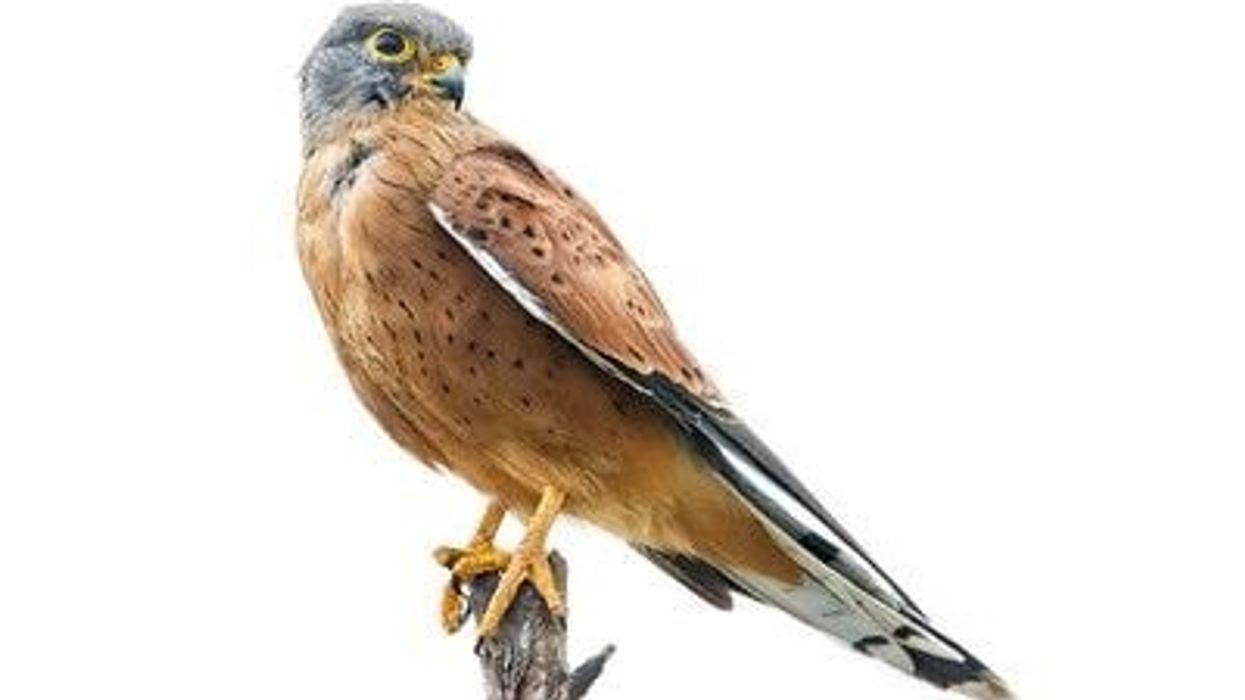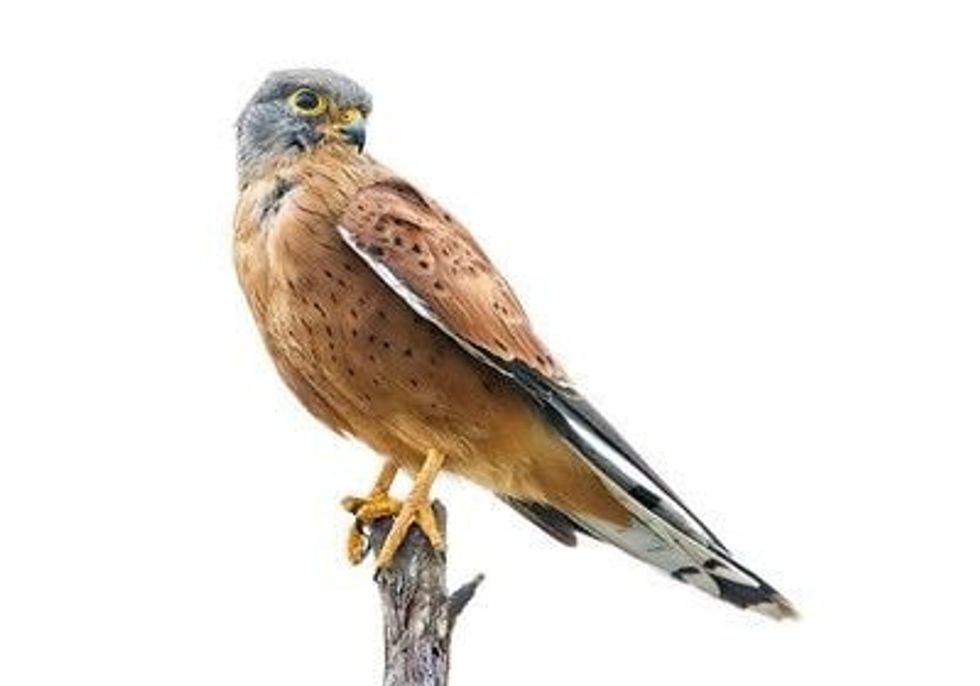The rock kestrel (Falco rupicolus) is a bird that belongs to the kestrel group in the family of falcons called Falconidae.
This bird of prey species was actually considered a subspecies of the common kestrel (Falco tinnunculus) and is still known by many as Falco tinnunculus rupicolus and Falco tinnunculus interstictus. The rock kestrel is found in Africa and is the most common among the falcon species of the world found in southern Africa.
In Africa, rock kestrel is found in northwestern Angola and Congo to south Tanzania and then towards the south to South Africa. The bird is found in a wide variety of habitats that include open areas through rocks, arid areas, and semi-arid areas.
There is less distribution of these kestrels in the north along with north-east Namibia, southern Mozambique, Botswana, and tropical Lowveld. You will also find fewer numbers in the central and eastern regions of Zimbabwe.
The bird is known by many names all over the world like Faucon crécerelle in French, Turmfalke in German, Kransvalk in Afrikaans, and many more.
Know more facts in the coming topics about the falcon species known as rock kestrel.
The rock kestrel (Falco rupicolus) is a bird that belongs to the kestrel group in the family of falcons called Falconidae.
This bird of prey species was actually considered a subspecies of the common kestrel (Falco tinnunculus) and is still known by many as Falco tinnunculus rupicolus and Falco tinnunculus interstictus. The rock kestrel is found in Africa and is the most common among the falcon species of the world found in southern Africa.
In Africa, rock kestrel is found in northwestern Angola and Congo to south Tanzania and then towards the south to South Africa. The bird is found in a wide variety of habitats that include open areas through rocks, arid areas, and semi-arid areas.
There is less distribution of these kestrels in the north along with north-east Namibia, southern Mozambique, Botswana, and tropical Lowveld. You will also find fewer numbers in the central and eastern regions of Zimbabwe.
The bird is known by many names all over the world like Faucon crécerelle in French, Turmfalke in German, Kransvalk in Afrikaans, and many more.
Know more facts in the coming topics about the falcon species known as rock kestrel.
Rock Kestrel Interesting Facts
What type of animal is a rock kestrel?
Rock kestrel is a species of bird of prey of the family of falcons. The species is found in Africa.
What class of animal does a rock kestrel belong to?
The rock kestrel (Falco rupicolus) is part of the order Falconiformes in the class of Aves of the kingdom of Animalia. The genus is Falco in the family of Falconidae.
How many rock kestrels are there in the world?
The population is not known for this falcon species of birds of prey as the distribution is quite large and throughout many parts. It may be sometimes even hard to locate as the rock kestrels generally do not need trees of ground to stay.
It perches and hovers whenever needed which makes it hard to sometimes spot these birds.
The species is the most common falcon or bird of prey species in Southern Africa. So, in southern Africa, it will be quite easy to see these kestrels in these areas, compared to the rest of the world.
Where does a rock kestrel live?
The rock kestrel (Falco rupicolus) can stay anywhere they want to because of their flight habits. The falcon, rock kestrel habitat includes hilly, and rocky areas flying over the ground and living in trees.
What is a rock kestrel's habitat?
The rock kestrel range map includes the south of Africa where the bird occurs naturally. In the south part of Africa, the kestrels are found in northwestern Angola east to the southern Democratic Republic of Congo and the south of Tanzania, and then south to South Africa.
The bird of prey is quite common in South Africa, Namibia, Botswana, Lesotho, Swaziland, and central Mozambique. Sources have found the birds generally staying in the southwestern part of the range during the breeding season.
The rock kestrel migrate often as in the breeding season, the birds stay in the south and west, but after the end of the season, the birds sometimes move towards north-east to Botswana, north-eastern South Africa, and Zimbabwe.
You may sometimes find a scarcity of these birds in the north and northeast Namibia, southern Mozambique, Botswana, and more places in Zimbabwe.
Who do rock kestrels live with?
The rock kestrel (Falco rupicolus) is found solitary in a group and this depends totally on the breeding season of the species. Breeding species of kestrels are also found in pairs. However, after breeding, they might leave to find each other the next breeding season. Nest of other birds is also used during the breeding time.
How long does a rock kestrel live?
The lifespan of a rock kestrel is not known. The common kestrel bird may live for around 16 years on average, while the longest living common kestrel is known to be of 24 years.
How do they reproduce?
The rock kestrel (Falco rupicolus) breeding season is from August to January and this is the time when rock kestrel eggs are laid. The breeding season occurs from August to October in the south-west and from September to November in the south-east.
See the rock kestrel bird make the nest in rock cavities and sometimes even on buildings. Sometimes, rock kestrel may even use the nest of other birds like crows and ravens. This nest is seen on trees and buildings. You may also find the bird on an old stick nest.
One to six eggs are laid by the female and the female alone takes part in the incubation which lasts for around 27-31 days. During these days, the male feeds and protects the female, and when the young hatches, the male generally cares for the young too. After 30-36 days of birth, the young fledge.
What is their conservation status?
The conservation status of rock kestrel (Falco rupicolus) is not mentioned by IUCN Red List. The common kestrel or Falco tinnunculus is categorized as Least Concern by the IUCN Red List currently due to the abundance of the bird in its natural habitats.
Even the rock kestrel was earlier considered a subspecies of Falco tinnunculus and is known by many researchers still by the scientific names Falco tinnunculus rupicolus and Falco tinnunculus interstictus. Going by the distribution and the abundance, there is currently no threat to the species.
It is important to keep a look out for the species as although there is no direct threat, conservation is very much necessary for the rock kestrel. Rock kestrel is commonly found in many protected areas.
Rock Kestrel Fun Facts
What do rock kestrels look like?
The rock kestrel (Falco rupicolus) is a medium-sized, slender kestrel. Males have fewer marks on the body than a common kestrel. The back is colored bright chestnut and the same coloration is seen on the underbody. Males have white underwings.
Females have gray-colored heads and tails and the backs of the birds have spots. More black bands in the central tail area are seen than male birds.
The common kestrel or Falco tinnunculus was earlier said to be the common species and the rock kestrel is a subspecies of the common kestrel.
How cute are they?
They are quite dangerous, yet very beautiful.
How do they communicate?
They communicate tactically and sometimes with sounds.
How big is a rock kestrel?
The rock kestrel (Falco rupicolus) is between 13-15.5 in (32-39 cm) in length.
The birds are 11.81-13 in (30-33 cm) tall.
The rock kestrel wingspan is between 26-32 in (65-82 cm).
How fast can a rock kestrel fly?
There is not much information about the rock kestrel flying speed. However, as it is part of the same family of falcons, the speed is quite quick.
The common kestrel speed is around 39 mph (63 kph) and the rock kestrel flight will be the same as it was considered a subspecies of the common kestrel.
How much does a rock kestrel weigh?
The rock kestrel (Falco rupicolus) males have a weight between 0.4-0.56 lb (183-254 g) and females have a weight between 0.41-0.61 lb (190-280 g).
What are the male and female names of the species?
The rock kestrel male and rock kestrel female are not given different names. They are known by their common name and scientific name - the rock kestrel (Falco rupicolus).
What would you call a baby rock kestrel?
A rock kestrel baby is called a young.
What do they eat?
The rock kestrel diet small birds, mammals, lizards, arthropods, and more, and the bird hunts from a high perch and sometimes even by hovering to spot the prey.
The diet is quite wide and they can feed on many animals from the ground or air.
Are they dangerous?
They are quite dangerous, although humans are probably safe from these birds.
Would they make a good pet?
They are not considered pets.
Did you know...
The rock kestrel (Falco rupicolus) is also known as Falco tinnunculus rupicolus and Falco tinnunculus interstictus.
The bird is also known by the name of European Kestrel, Old World Kestrel, or Eurasian Kestrel.
The rock kestrel (Falco rupicolus) is known in French by Faucon crécerelle, in German by Turmfalke, and in Afrikaans by Kransvalk.
The bird is known to perch and even for hovering sometimes if no tall area is nearby and the prey is seen.
Why are rock kestrels endangered?
They are not considered endangered and found abundant in their range.
Why is it called rock kestrel?
It is quite simple really. The bird prefers rocky habitats and the name rock kestrel came into being.










